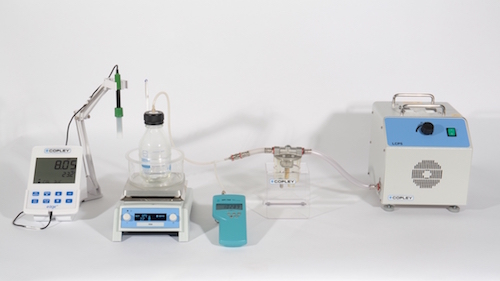Members Login

Channels
Special Offers & Promotions
Lose the Bubbles - New Vacuum De-Aeration Apparatus from Copley Scientific Improves the Accuracy of Semisolid Dosage Testing

Use of the new Vacuum De-aeration Apparatus from Copley Scientific improves the accuracy of semisolid pharmaceutical testing by efficiently de-gassing the medium used in Vertical Diffusion Cells (VDCs) to measure the drug release profile of these products.
Semisolids are creams, ointments, gels or lotions used principally in the treatment of dermatological conditions that are applied topically to the skin to deliver a localised therapeutic response. The performance of such products is determined by measuring the release rate of the active ingredient, through a suitable membrane held in contact with a receptor medium contained within a VDC.
Air bubbles accumulating on the underside of the membrane are the single largest source of problems in VDC testing. As a result, it is essential that the receptor medium used to bathe the membrane is de-gassed prior to use if the generation of air bubbles, and hence impaired diffusion, is not to take place. United States Pharmacopoeia Chapter <1724>, which specifies the test method for semisolids, calls directly for the de-gassing of the receptor medium ahead of testing to avoid this issue.
The new Vacuum De-aeration Apparatus from Copley Scientific is an inexpensive unit specifically designed to provide a source of pre-warmed, de-gassed media for use in VDCs. It operates by heating the receptor media up to 45oC under vacuum conditions of 90kPa below atmospheric pressure. Performance data suggest that dissolved oxygen can typically be reduced to below 4 ppm within one hour. This compares favourably with the compendial recommendation of less than 6 ppm.
more news from copley scientific
Media Partners


